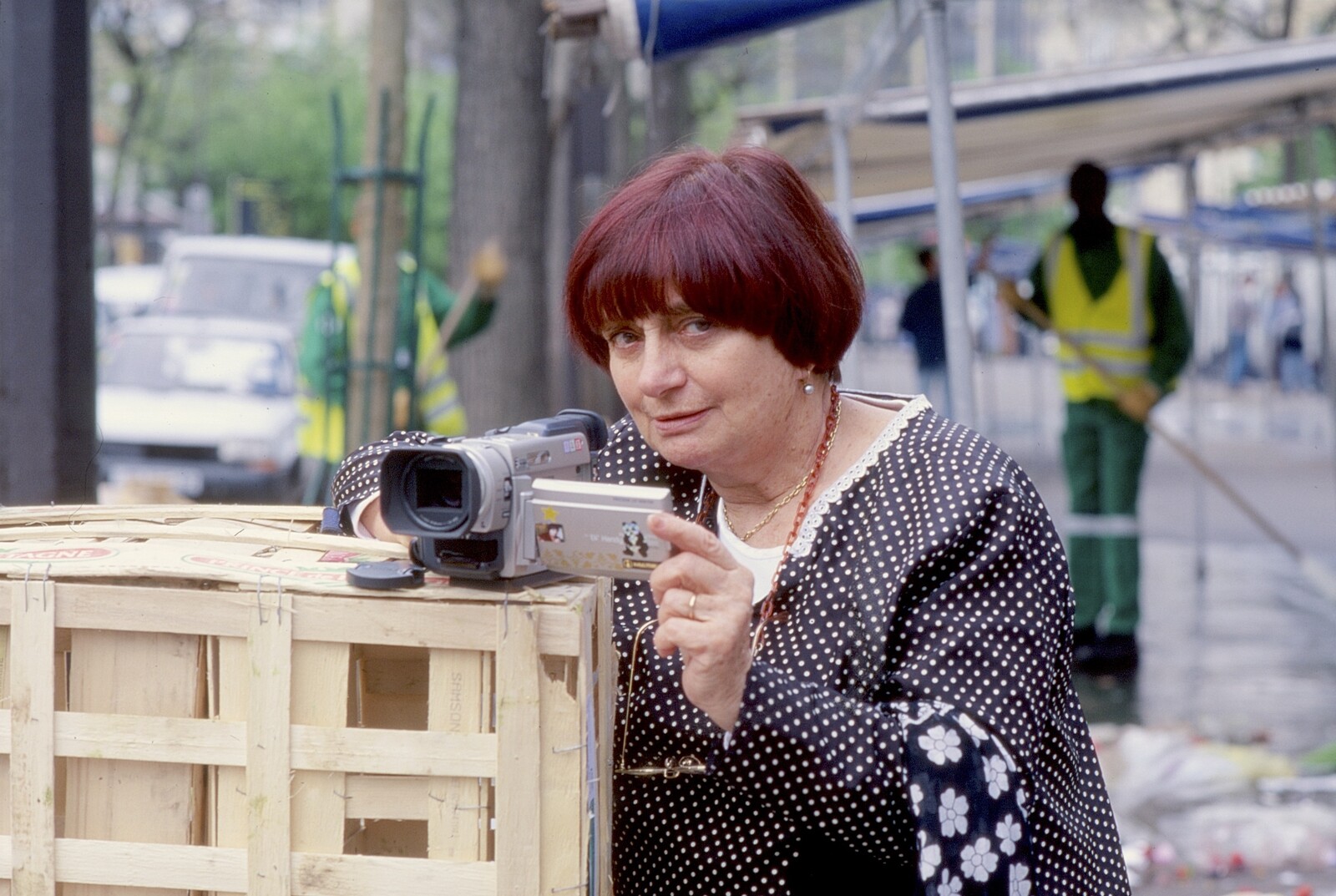Categories
Subjects
Authors
Artists
Venues
Locations
Calendar
Filter
Done
October 9, 2024 – Feature
Carrie Rickey’s A Complicated Passion: The Life and Work of Agnès Varda
Brian Dillon

I once met her, if you could call it that, for a few seconds at the Frieze Art Fair; she turned to the person who introduced us and asked: “Is he going to look after me?” She must have meant it ironically, because in 2009, a decade before she died, Agnès Varda was not only busier than ever—after photography and film, she had lately embarked on her “third career” as an installation artist—but honored as a New Wave instigator and a pioneer feminist director. Also, to her delight, more and more beloved as an eccentrically turned-out presence on the film-festival and art-fair circuits: beneath the lifelong bob and variegated dye-job, she might turn up in silk pajamas, purple tracksuit (both by Gucci), or dressed as a potato. Varda’s last years formed a giddy and heartening coda to a life and a body of work that were playful and profound. And an artist who, if Carrie Rickey’s new biography of her is to be trusted, was utterly tireless on every front, artistic or intimate.
Varda was born in Brussels in May 1928—her parents named her Arlette, because she had been conceived in Arles. When the Nazis invaded Belgium in 1940, the …
April 29, 2022 – Feature
Erin L. Thompson’s Smashing Statues
R.H. Lossin

Amid the waves of protests against the murder of unarmed black people by the police, many more US citizens began to question the validity of statues honoring men who massacred the continent’s indigenous inhabitants, owned slaves, and otherwise profited from the suffering, exploitation, and death of mostly non-European people. Some statues were successfully pulled down by crowds, others damaged, removed under the cover of night, and placed in storage. But most of these sculptures, as Erin L. Thompson documents in her much-needed history of public monuments and social change, have been legally protected in perpetuity by state legislatures. Take for example the Confederate Memorial Carving on Stone Mountain, which is the largest bas-relief sculpture in the world and depicts the heroes of the slave South Jefferson Davis, Thomas “Stonewall” Jackson, and Robert E. Lee as they ride toward something—possibly a future in which they exercise an inordinate influence. Thompson, a specialist in art crime, has written a thoroughly researched, convincing, and readable argument for the removal of the United States’ monuments to its colonial and slave history: in doing so, her book eradicates any lingering doubts as to the wisdom of suppressing these symbolic markers of the past.
Advocates of …